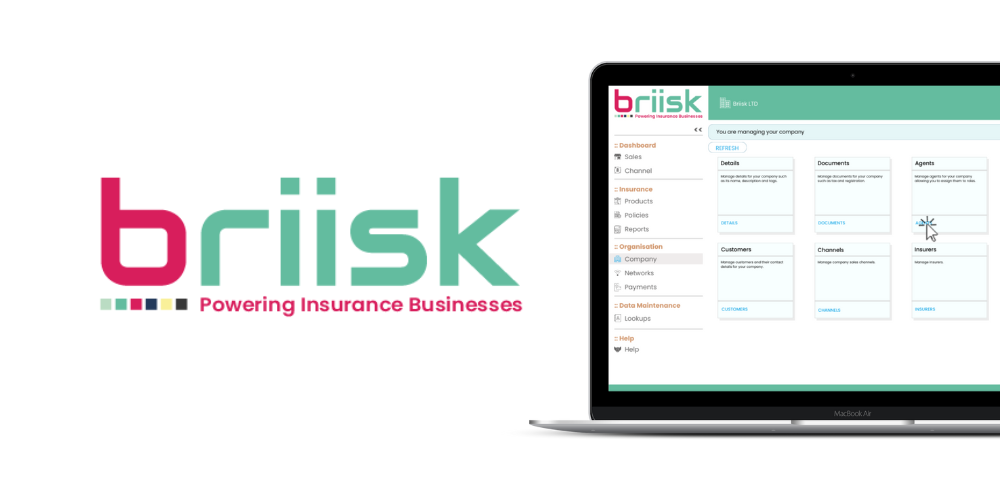Artificial Intelligence (AI) is no longer just a futuristic buzzword — it’s here, shaping how industries operate, innovate, and grow. In insurance, where efficiency and accuracy are critical, AI has the potential to transform every step of the value chain, from product design and marketing to claims management and training. But while many talk about AI, the real question is: how do we practically apply it in ways that deliver measurable business outcomes?
At Briisk, we’re constantly exploring this question. Through our Briisk Instant Transaction Platform (BITP), we enable insurers, UMAs, and brokers to digitise, automate, and scale their businesses. And now, as the possibilities of agentic AI (AI systems capable of reasoning, planning, and executing tasks) unfold, Briisk is actively working on ways to make these capabilities possible for our partners—so that the benefits move from theory into practice.
Why AI matters in insurance right now
Insurance is built on processes — drafting requirements, coding systems, onboarding clients, processing claims, collecting premiums, and transferring knowledge. Every one of these touchpoints represents an opportunity for speed, accuracy, and scalability. AI doesn’t just make things faster; it changes how businesses operate:
✅ Repetitive manual tasks are automated.
✅ Data-heavy decision-making becomes smarter.
✅ Customer experiences become seamless and personalised.
For insurers, this isn’t just operational improvement — =it’s a competitive edge.
The Briisk lens: Build, operate, transfer
When we think about AI, it’s not only about building shiny new tools. It’s about aligning technology with a business’s operating model. At Briisk, we’re investigating how AI can be applied in three key ways:
✅ Build – Exploring how AI might accelerate the design, drafting, and development of digital solutions for insurers and brokers.
✅ Operate – Assessing how AI could be embedded into future day-to-day operations: marketing campaigns, sales pipelines, claims processing, and customer service.
✅ Transfer – Considering how AI will support knowledge, training, and upskilling, so businesses can continue to operate efficiently and innovate independently.
This Build–Operate–Transfer model ensures that AI is not just an add-on, but a sustainable capability within an organisation.
The Briisk advantage: What we do for the industry
Briisk enables brokers, UMA’s, and insurance companies to digitise their businesses end-to-end. Through the Briisk Instant Transaction Platform (BITP), we empower insurance partners to:
✅ Digitise products and bring them to market faster
✅ Enable white-label distribution to reach customers at scale
✅ Automate workflows like policy issuance, premium collection, and claims management
✅ Deliver user-friendly customer journeys that boost conversion and retention
✅ Gain data-driven insights with analytics and reporting
By combining digitisation, automation, and customer-centric design, Briisk gives insurance businesses the tools to reduce costs, scale distribution, and increase efficiency — all while making the process more transparent and accessible for end customers.
A sneak peek at what’s next
This blog is the start of a series where we’ll explore how AI could reshape specific functions across the insurance value chain. Over the coming weeks, we’ll look at questions like:
✅ Can AI draft business requirements more accurately than humans?
✅ How might AI speed up development and coding without sacrificing quality?
✅ Where could AI unlock efficiency in claims management and collections?
✅ How will agentic agents support training, knowledge transfer, and upskilling?
Each blog will highlight potential use cases and how Briisk is positioning BITP to make these kinds of AI capabilities possible in the future.
Conclusion
AI in insurance is not just about innovation for innovation’s sake — it’s about building better, faster, and more efficient businesses. At Briisk, we’re working to lay the foundations for AI to become a practical, accessible tool for insurers, UMAs, and brokers, helping turn industry challenges into future opportunities for growth and competitive advantage.
Stay tuned for our next post: “AI and the Drafting of Business Requirements – Smarter, Faster, Better.”


